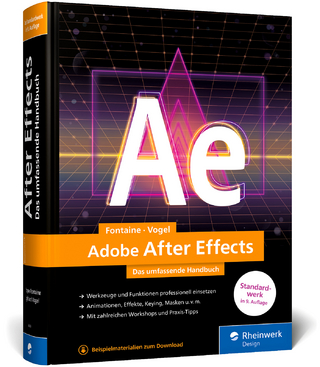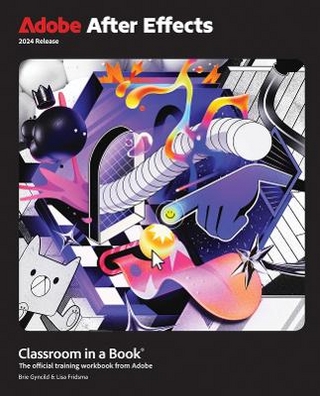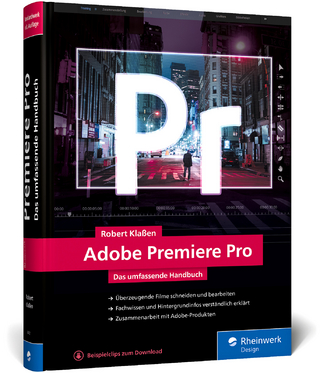
3ds max 6 for Windows
Peachpit Press Publications (Verlag)
978-0-7357-1391-8 (ISBN)
- Titel ist leider vergriffen;
keine Neuauflage - Artikel merken
The most efficient, affordable, must-have guide to the leading 3D modeling and animation application for Windows. It covers all of the new features in the latest version, 3ds max 6. This popular format functions as a tool for learning 3D modeling, animation, and rendering, and as a handy reference. With 3ds max 6, illustrators, animators, game designers, and special effects designers can create and animate dazzling, highly realistic 3D graphics such as those seen in summer blockbusters like Minority Report and Spider-Man. That's one reason so many art schools offer 3ds max training to aspiring professionals. The complex interface and powerful technology underlying 3D animation and modeling software can be intimidating to newcomers, but the 3ds max 6 for Windows: Visual QuickStart Guide breaks the process down into manageable tasks to remove the fear factor. The amply illustrated, task-based format also makes the book an invaluable reference for experienced users upgrading to the new version. This is an efficient but authoritative guide. After a thorough introduction to the program's interface, navigation, and display tools, the book gets to the real heart of this QuickStart Guide: modeling and transforming objects, surface mapping, 3D rendering and animations. It covers all of the program's new features, including enhanced character animation, the Active Shade interactive renderer, improved UV mapping tools, advanced lighting and shadows, and more, and presents them in the straightforward, well-paced style that characterizes the Visual QuickStart Guide series. This book is essential for anybody wanting to gain or enhance professional skills in 3ds max 6.
Michele Matossian, MFA, is an award-winning artist with more than 10 years of college teaching experience. Her work has appeared in games, galleries, Web sites, magazine ads, and medical and scientific education CD-ROMs. The founder of Lightweaver Communications, Michele provides e-learning consulting services to corporations and education institutions. For more information, see www.lightweaver.com.
Introduction.
1: Getting Started.
Installing 3ds max 6. Setting Up 3ds max 6. Accessing Tech Support. Touring the Interface. Special Controls. Managing Files.
2: Creating Objects.
About Creating Objects. Creating Mesh Objects. Creating Shape Splines. Precision Aids.
3: Viewport Navigation and Display.
Getting Your Bearings. Putting It in Perspective. Customizing Viewports. Viewport Resolution. Navigating Viewports. Test Rendering.
4: Object Selection and Display.
Selecting Objects. Region Selection. Selecting by Name. Grouping Objects. Changing Object Display.
5: Transforms.
Transform Tools. Transform Gizmos. Advanced Controls. Precision Aids. Cloning. Using Advanced Transforms.
6: Modifying Objects.
Using Modifiers. Deformation Modifiers. Using Multiple Modifiers. Subdividing Surfaces. Rendering Modifiers. Spline Modifiers. Animating with Modifiers. Using XForm Modifiers.
7: Animation.
Moving Through Time. Configuring Time. Keyframing. Working with Keys. Working with Controllers. Bézier Controllers. Adding Sound. Constraining Animations. Linking Objects.
8: Editing Meshes and Polymeshes.
Mesh Sub-Object Selection. Transforming Mesh Sub-Objects. Modifying Mesh Sub-Objects. Editing Mesh Objects. Editing Polymeshes. Polymesh Sub-Object Selection. Editing Polymesh Objects.
9: Editing Shapes.
Shape Sub-Objects. Adjusting Curvature. Editing Shapes.
10: Compound Objects.
Creating Boolean Objects. Lofting Objects. Editing Lofts. Morphing Objects. AEC Objects.
11: Lights.
Illuminating Scenes. Creating Lights. Casting Shadows. Controlling Illumination. Navigating Lights. Animating Lights.
12: Cameras.
Viewing Scenes. Creating Cameras. Adjusting Cameras. Navigating Cameras. Animating Cameras.
13: Materials.
Using the Material Editor. Using Material Libraries. Standard Materials. Compound Materials.
14: Maps.
About Maps and Mapping. Browsing Maps. Creating Maps. Adding Maps to Materials. Applying Mapping Coordinates to Objects. Using Environment Maps. Reflection and Refraction.
15: Rendering.
Rendering Scenes. Rendering Effects.
Appendix A: Icons.
Appendix B: Keyboard Shortcuts.
Index.
| Erscheint lt. Verlag | 25.3.2004 |
|---|---|
| Verlagsort | Berkeley |
| Sprache | englisch |
| Maße | 228 x 179 mm |
| Gewicht | 830 g |
| Themenwelt | Informatik ► Grafik / Design ► Film- / Video-Bearbeitung |
| Informatik ► Office Programme ► Outlook | |
| ISBN-10 | 0-7357-1391-X / 073571391X |
| ISBN-13 | 978-0-7357-1391-8 / 9780735713918 |
| Zustand | Neuware |
| Informationen gemäß Produktsicherheitsverordnung (GPSR) | |
| Haben Sie eine Frage zum Produkt? |
aus dem Bereich


